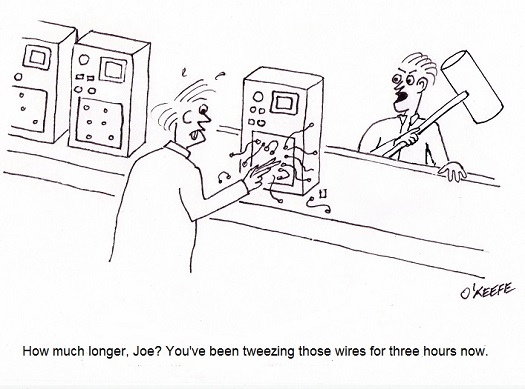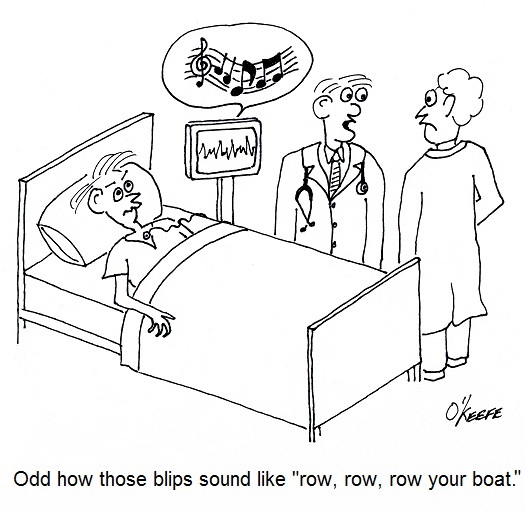|
Who hasn’t finished a project, only to discover that you’d done something wrong and the whole thing would need to be redone? Perhaps you hadn’t checked your work along the way, confident that all would be well in the end. Imagine the costs involved if this scenario were to take place on a commercial production line. The Systems Engineering Approach to things helps ensure this doesn’t happen. Last time we wrapped up our discussion on the Production stage of the systems engineering approach to medical device design, and today we’ll cover the final stage, Utilization. The Utilization stage marks the point at which the medical device has been sold and is in actual use in the marketplace. Despite the fact that the product has at this point undergone many reviews and revisions and a great investment has been made into deciding whether or not to put it into production, changes can still take place in its design. Markets aren’t static, and products may be made to change due to stakeholders’, that is, those with a vested interest, changing requirements, whether those are aimed at further cost reduction, or perhaps to implement innovations to make the product more appealing to end users. Other reasons for change may be initiated by the sales and marketing departments. They keep their fingers on the pulse of consumer trends, and they may want the design modified according to market research and feedback they receive from dealers, service technicians, and end users. For example, the sales staff may have been apprised by end users that the keypad to their electronic muscle stimulating device needs modification. Patients have voiced they would prefer to here a clicking sound when depressing the buttons, in order to receive some auditory feedback. In addition, distributors of the device reported that although the electronic stimulators were functioning as intended, end users didn’t like the feel of the buttons. The lack of tactile feedback often led to confusion because they weren’t sure whether they had depressed the button or not. Another interesting discovery concerning lack of feedback was that product service technicians were reporting premature wearing out of the keypads. Absent the satisfying click sound, users were inclined to push on the pads too strenuously, which drove up warranty service costs. The medical device manufacturer’s stakeholders are always concerned with costs, and increased service costs definitely raise the red flag. Considerations like these typically arise after a medical device enters the Utilization stage. Fortunately, the objective of the systems engineering approach is to ensure that stakeholders’ needs are met in view of ever-changing requirements, even after the device has entered the marketplace. No matter what may happen during the life cycle of a product, the systems engineering approach is used every step of the way, from the Concept stage through to Utilization. That ends our discussion on the systems engineering approach to medical device design. Next time we’ll begin unraveling some of the mysteries and misconceptions behind patenting inventions. ___________________________________________ |
Posts Tagged ‘stakeholder requirements’
Systems Engineering In Medical Device Design – Preproduction, Part 3
Monday, February 18th, 2013| We’ve been discussing the Preproduction aspect of the Development stage of our systems engineering approach to medical device design. Last week we learned that once the medical devices produced during Preproduction are assembled, they’re subjected to rigorous testing, first in the lab, then in the real world.
Once devices produced in Preproduction pass the test in a controlled laboratory environment, it’s time to place them into field testing. The objective is to place Preproduction devices within actual working environments, such as healthcare facilities. These facilities must be willing to cooperate with design engineers during testing on a number of items, including but not limited to evaluation of product performance and clarity of instructions. In order for this to happen, design engineers must coordinate their efforts with their company’s sales and marketing departments to locate, qualify, and enlist suitable facilities. To qualify, a facility must be able and willing to put enough hours of use onto the test device to effectuate a thorough and complete analysis of its effectiveness. Depending on FDA regulatory requirements and the complexity of the design, field testing could take as little as several months or as long as several years. During field testing valuable data is gathered to enable engineers to evaluate the performance of the Preproduction devices. This data will then be measured up against stakeholder requirements. What this process might entail in a dialysis machine, for example, is that test data is analyzed to make sure all operational parameters fall within the desired range. Data would be derived from measurements of such things as the pressure of blood flowing pre- and post- introduction to the dialyzer. Measurements are dutifully recorded by engineers and field personnel onto data sheets for later evaluation back at the manufacturer’s engineering office. Persons contributing data vary widely, from healthcare facility end users and maintenance personnel, to the medical device dealer’s service technicians. End users also provide feedback to design engineers regarding the field test device’s functionality, effectiveness, reliability, and maintainability. Feedback can include specific information about things like glitches in software, unusual noises, erratic operation, breakdowns, and even difficulties encountered during repairs. If any problems are discovered with the device during lab and field testing, revisions are made. Design engineers and technical writers get back to the drawing board to rework things and find resolutions until all issues have been addressed. Only then is the design presented to stakeholders for final approval. If all goes well, manufacturing will now take over and place the device into full commercial production. We have now concluded our discussion on the Development stage of systems engineering as it relates to medical device design. Next time we’ll move on to the Production stage where we’ll examine post-production concerns. ___________________________________________ |
Systems Engineering In Medical Device Design – Instructions, Part 3
Sunday, January 20th, 2013| Last time we looked at the objective of the quality control department in the Production stage, that being to ensure that the end product produced fits all requirements. We learned that to meet this objective a great deal of collaboration must take place in the Development stage between quality control staff and design engineers in order to produce a complete set of instructions for quality control inspection and testing. Now let’s see how these instructions are developed.
Inspection and test methods are devised by the quality control department to ensure that a completed medical device lives up to its intended use. What good is a diagnostic imaging machine that doesn’t provide accurate internal views of a patient’s body? Or a heart defibrillator that sends electrical energy pulses to a patient’s heart muscles when it’s not supposed to? Quality control instructions are developed to guide inspection and testing methods so they’re performed correctly and consistently during the medical device Production stage. The objective is to catch problems before they occur. For example, it can be specified that the plastic body components of a medical device be visually inspected after they are received from an outside vendor to check for undesirable defects, such as the presence of burrs, cracks, or non-uniform coloration. If anomalies are discovered, they’re documented, and the components are rejected. In other words, they are barred from being used in the assembly process. Quality testing methods are varied. They may involve hooking up the completed medical device to test instruments to simulate all possible modes of operation and any anticipated glitches that may occur during testing. While hooked up, the device’s operation is measured against key parameters to ensure that all is working well, and the data gathered is recorded and analyzed to see if operation is within normal limits. For example, an electric multimeter could be connected to the power cord of the device to measure how much electrical current is being drawn from the wall outlet during operation. If current drawn is too high, it may be indicative of a defective electrical component, and an in depth examination would follow. Generally speaking, if test measurement parameters do not fall within acceptable limits as determined by previously established stakeholder requirements, then the medical device will be rejected by quality control. It will then be sent back to the manufacturing department, along with a detailed inspection and test report explaining why it was rejected. At this point the rejected device is either reworked or disposed of entirely. Next time we’ll continue our discussion on the development of instructions for the Utilization stage, the stage where the medical device is actually put into use by the end user. ___________________________________________ |







